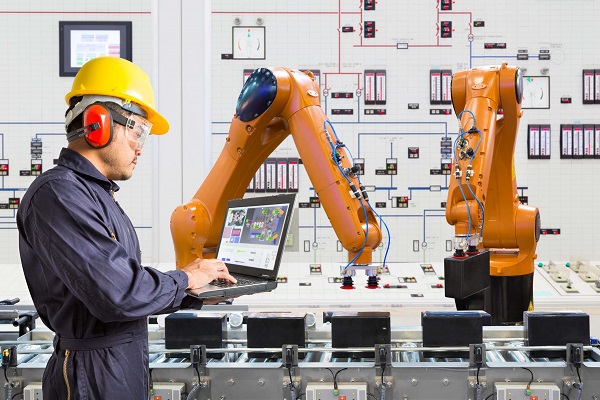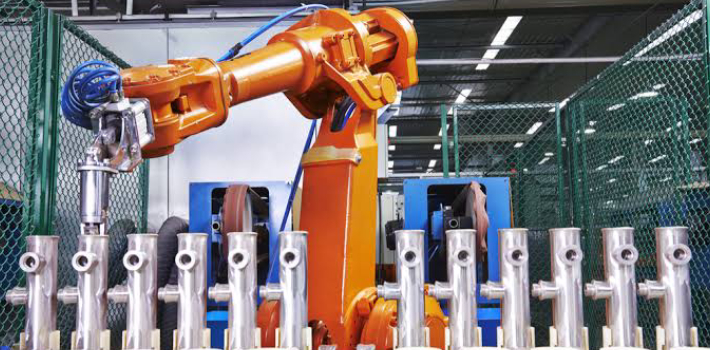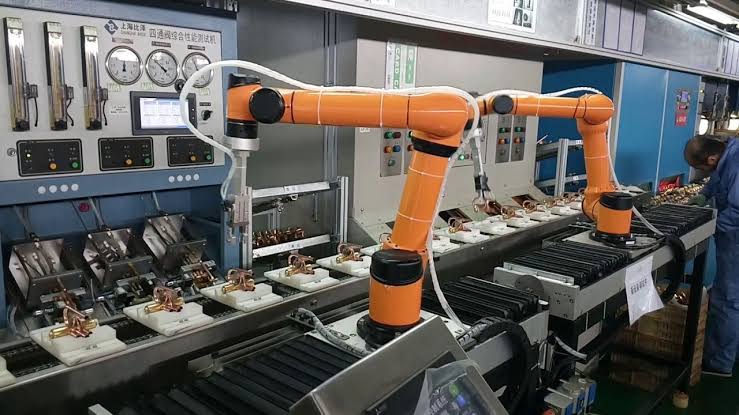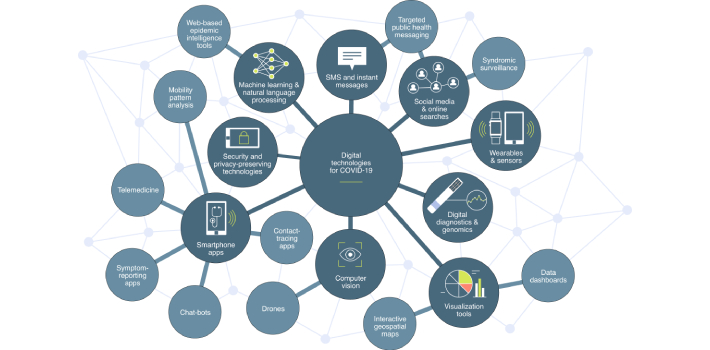We are all familiar with industrial robots that replaced humans in highly unsafe and mundane jobs in the manufacturing sector. These operated within stipulated safety parameters. Collaborative Robots (Cobots) is the new buzzword in the industry. These work alongside humans and have been able to overcome the spatial problems posed by traditional robots. They can be programmed easily to handle a variety of jobs and can connect with humans more naturally.
Cobots in Industry 4.0
A new phase in the industrial revolution, focusing on automation, real-time processing, machine learning, etc. is termed as Industry 4.0. Cobots are slowly taking over Industry 4.0. They can collaborate with IoT in any industrial environment. Equipped with powerful computing mechanisms, they can promote information exchange and assist in modeling and analytics.
Cobots are not merely tools for automation. They are powered to make decentralized decisions. With their intuitive abilities, they are easy to teach and operate. Additionally, being digital products, they can be upgraded to include several functions and thus continue to evolve over a period of time.
Industrial robots are not affordable for SMEs, and hence these industries were challenged with the options for automation in Industry 4.0. This is not the case anymore. Small and medium enterprises are beginning to deploy cobots for automation, as they occupy less space, affordable, programmable, and versatile.
Characteristics of Cobots
Cobots are designed following the ISO standards and specifications for cobot deployment. Accordingly, Cobots come with safety features and control systems that enable them to collaborate with humans more effectively.
Some of the characteristics of Cobots are as below:
- Cobots are designed to work closely with humans. Most of the time, they do not require safety fencing.
- They are light, occupy less space and mobile – Most Cobots are designed with a mobile platform that can enable flexible movement and automated mobility across the manufacturing unit.
- They are smart digital systems, equipped with mechanisms that allow hand guiding, force limiting and compliance control, collision sensitivity, etc.
- Cost-effective – They are economically viable for businesses of different sizes and productivity. Implementation and integration are an inexpensive affair, and the ROI is faster.

Role of Cobots in Automation
Since cobots are easily programmable, they can be designed to carry out some of the following functions:
- They can be used as vision systems, with a mounted camera. These systems can help in surveillance of the workplace ensuring safety for human workers
- Cobots, when fitted with torque sensors in its joints, can sense collisions. The same mechanism can enable cobots to perform advanced force limiting functions.
- They can be used in functions such as palletizing, machine tending, loading/unloading operations and other repetitive tasks.
Cobots are customizable and can be tailored to automate different functions over its lifespan. Using Cobots in automation can provide the following benefits.
- Minimizes the physical effort for strenuous tasks
- Increases quality and productivity
- Reduces material wastage
- Consistent and reliable output
- Low margin of error
Cobots in Manufacturing Industry
The manufacturing sector is often challenged with a shortage of labor. Cobots address this challenge by supporting labor-intensive functions such as machine tending, packaging, assembly, etc.
There is a concern that they may not be suited for robust industrial applications such as high-torque screwdriving. Modern cobots are designed with force limiting mechanisms that can sense the force exerted during different activities.
Cobot kits now come with pneumatic sanders that are machine-controlled, to handle processing functions such as sanding. The addition of force and torque sensors empower cobots to be deployed for activities that require force control and force feedback for optimal performance.
The manufacturing industry offers plenty of scope and potential for cobots. There are still some functions that require human effort, but for all other tasks, Cobots are the solution for automation. Small and medium manufacturers are considering cobots for their automation needs, thanks to high adaptability and affordability. Cobots are expected to see significant growth and are all set to take over the manufacturing sector. https://www.gigabitmagazine.com/ai/rise-cobots – Check this out to know more about the rise of the cobots in the manufacturing industry.
Cobots have now become co-workers and empower humans to carry out high-skilled, mentally rewarding jobs. Cobots can deliver all the benefits of advanced automation tools, devoid of costs of setting up, programming and installing safety measures. Thus collaborative robots are becoming game changers in Industry 4.0.





